Steven Seagal, who has long supported nuclear disarmament, helping to fund the multinational Center for Defense Information, today said the cause of peace will be advanced when nations realize they are "one family" that must transcend an obsession with national borders.
He made the statement to O’Dwyer’s on the 71st anniversary of the end of World War II which took place Aug. 15, 1945 when Japan announced it was unconditionally surrendering after atomic bombs had been dropped on Hiroshima and Nagasaki.
“It is the responsibility of every global citizen to rid the world of this imminent threat. I have been blessed to know many of the individuals who survived the bombings of Hiroshima and Nagasaki” Seagal said at ceremonies in San Francisco July 16, 2005.
He told O'Dwyer's today: "The world is concerned with defending borders but in order for mankind to survive these perilous times we have to realize we are one famlly and to survive we must transcend these territorial concerns."
|
|
Seagal, who attended the July 15, 2005 ceremonies with Sharlene Spingler, now Associate Publisher and Editor of O’Dwyer’s, praised the monks who had preserve a flame from the Hiroshima blast, brought it to San Francisco, and who then walked 1,600 miles to Alamogordo, N.M., where the first atomic bomb was detonated 60 years earlier.
Said Seagal: “It is by their example of spirit and strength that drives my determination to make this world a safer place.”
Also taking part in the ceremonies were survivors of the Hiroshima blast, Japanese Senator Shoukichi Kina, and Dr. Bruce Blair of the Center for Defense Information, Washington, D.C.
The ceremony commemorated the deaths of more than 120,000 in atomic bombs on Hiroshima and Nagasaki.
Hiroshima was bombed Aug. 6, 1945 and Nagasaki three days later. Japan surrendered Aug. 14 but historians record both Aug. 14 and Aug. 15 as end-of-the war days.
Spingler, Associate Publisher and Editor of O’Dwyer’s, has long been a friend of actor Seagal who had lived in Japan a third of his life and married and raised children there.
He brought to Spingler to a ceremony in San Francisco July 16, 2005, which was the 60th anniversary of the detonation of the first atomic bomb in Alamogordo, N.M. It was held on the pier next to which was docked the Japanese Tall Ship Nippon Maru.
The ship transported the original atomic flame taken by a monk from the burning embers in Hiroshima and kept alive in a monastery for 60 years. At least 80,000 died instantly in the Aug. 6, 1945 blast while 40,000+ died in the Aug. 9 blast.
Other estimates are that from 90,000 to 146,000 died in Hiroshima and from 39,000 to 80,000 in Nagasaki.
As of 2005 there were 270,000 “hibakusha” or bomb survivors still living in Japan.
Monks Walked 1,600 Miles to Test Site
|
|
The monks believed that “good and evil happen in circles,” says an article on the event that appeared under Spingler’s byline in The Day, New London, on July 31, 2005. The monks then walked 1,600-miles from S.F. to the Trinity Test Site where the flame was extinguished. Sponsoring the commemoration was the Global Nuclear Disarmament Fund.
The atomic flame was passed to Japanese Senator Shoukici Kina who gave it to Seagal who passed it back to the monks so they could begin their walk to the Trinity site.
Seagal gave the Fund its first $100,000.
Says the Spingler article: “They believe that by bringing the flame back to its source, they will close the circle of destruction in a peaceful manner while opening up a new circle of peace."
Spingler’s mother worked during the 1940’s on the Manhattan Project, which created the atomic bomb.
The original atomic flame was passed from a Hiroshima survivor to Dr. Bruce Blair of the multinational Center for Defense Information, Washington, D.C.

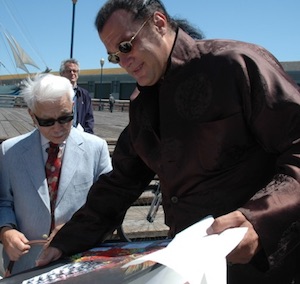
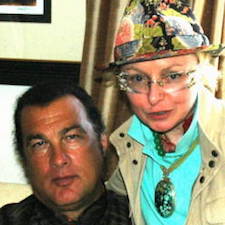

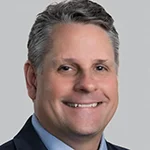 Husch Blackwell Strategies has added FleishmanHillard alum Michael Slatin as a principal in its public affairs group.
Husch Blackwell Strategies has added FleishmanHillard alum Michael Slatin as a principal in its public affairs group.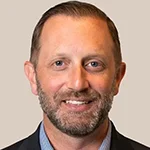 Rory Cooper, a veteran Republican operative and policy specialist, has joined Teneo’s Washington office as senior managing director in its strategy & communications practice.
Rory Cooper, a veteran Republican operative and policy specialist, has joined Teneo’s Washington office as senior managing director in its strategy & communications practice.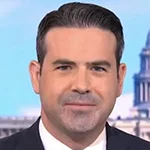 Brian Fallon, who served as national press secretary for Hillary Clinton’s 2016 presidential run, is signing on next month as Vice President’s Kamala Harris’ campaign communications director.
Brian Fallon, who served as national press secretary for Hillary Clinton’s 2016 presidential run, is signing on next month as Vice President’s Kamala Harris’ campaign communications director. TikTok is nothing more than a Chinese propaganda tool that poses “a grave threat to America’s national security and, in particular, impressionable children and young adults,” say two Congressmen who want the platform registered as a foreign agent.
TikTok is nothing more than a Chinese propaganda tool that poses “a grave threat to America’s national security and, in particular, impressionable children and young adults,” say two Congressmen who want the platform registered as a foreign agent. Public Strategies Washington has added Abbie Sorrendino, a former aide to now Senate Majority Leader Chuck Schumer.
Public Strategies Washington has added Abbie Sorrendino, a former aide to now Senate Majority Leader Chuck Schumer.


 Have a comment? Send it to
Have a comment? Send it to 
No comments have been submitted for this story yet.